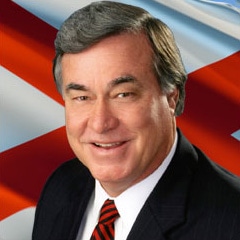It is Alabama vs. Auburn week in Alabama. It is the fiercest of college football rivalries. It is the game of the year. It is a state civil war that divides friends and even families. It is bragging rights for the entire year. The loser has to live with his boasting next door neighbor for 364 days. It seems that one must choose a side regardless of whether you despise college football and could care less who wins. Newcomers to our state are bewildered on this fall day each year. They cannot comprehend the madness that surrounds this epic war. It is truly that – a war. It is the game of the year!
Young boys all over Alabama grow up playing football in their front yards and dreaming of playing in this big game. It is said that when these two rivals meet one can throw out the record books. However, that is not true. In fact, in 90 percent of the games the favorite wins. A lot of SEC championships and bowl games have been decided by this game. It has made many Alabamians’ Thanksgiving holidays either joyous or sad.
The game was not played for forty years between 1908 and 1948. Myth has it that the game was halted because of the intense rivalry. That is not the case. The true history of the ceasing and renewal is that after the 1907 game the schools could not agree on the terms of the contract. The dispute involved meal money, lodging, officials, and how many players each side could bring. Football was not the passion it is today so the two schools let the matter rest and the fans did not seem to care. That began to change as college football grew to a major sport in the 1940’s.
When the series resumed, a popular myth is that the Alabama Legislature called a special meeting and forced the teams to play. That never happened. However, it is true that the House of Representatives passed a resolution in 1947 to encourage, not force, the schools to meet in football and officials at Alabama and Auburn agreed. The presidents of Auburn and Alabama simply talked with each other and decided it would be in the best interest of the schools to start playing again on an annual basis. The contract was drawn up, papers were signed, and the rivals literally buried the hatchet. On the morning of December 4, 1948, the president of each school’s student body dug a hole at Birmingham’s Woodrow Wilson Park, tossed a hatchet in and buried it.
The series began again in 1948 with a 55-0 Alabama victory and the teams have squared off every season since. I liked the rivalry better when it was played at Legion Field, but I am an old timer in heart and age.
Because we have just had a governor’s race, I thought it might be interesting to take a look at the alma mater of our elected governors since the 1948 resumption of the series. Big Jim Folsom was not a college graduate. Gordon Persons was an Auburn graduate. Big Jim was governor a second time. John Patterson was an Alabama graduate. George Wallace was an Alabama graduate. Lurleen Wallace did not go to college. Wallace was governor again from 1970-1978. Fob James was not only an Auburn graduate but also an Auburn halfback during the 1950’s. George Wallace was governor again and was followed by Guy Hunt who was not a college graduate. Hunt was elected twice. Fob served another term as governor and then handed the reigns to Don Siegelman who was an Alabama graduate and student body president at the Capstone. Siegelman was followed by Bob Riley, a two-term governor and graduate of the University of Alabama.
This recent governor’s race pitted Dr. Robert Bentley, a University of Alabama graduate, against Ron Sparks, who did not graduate from a four-year institution of higher learning. Alabama won that contest. If you count an alma mater for each term served by a governor, the count is the University of Alabama 9, no college 5, and Auburn 3.
See you next week.

Steve Flowers
Alabama’s premier columnist and commentator, Steve has analyzed Alabama politics for national television audiences on CBS, PBS, ABC and the British Broadcasting Network. Steve has been an up close participant and observer of the Alabama political scene for more than 50 years and is generally considered the ultimate authority on Alabama politics and Alabama political history.